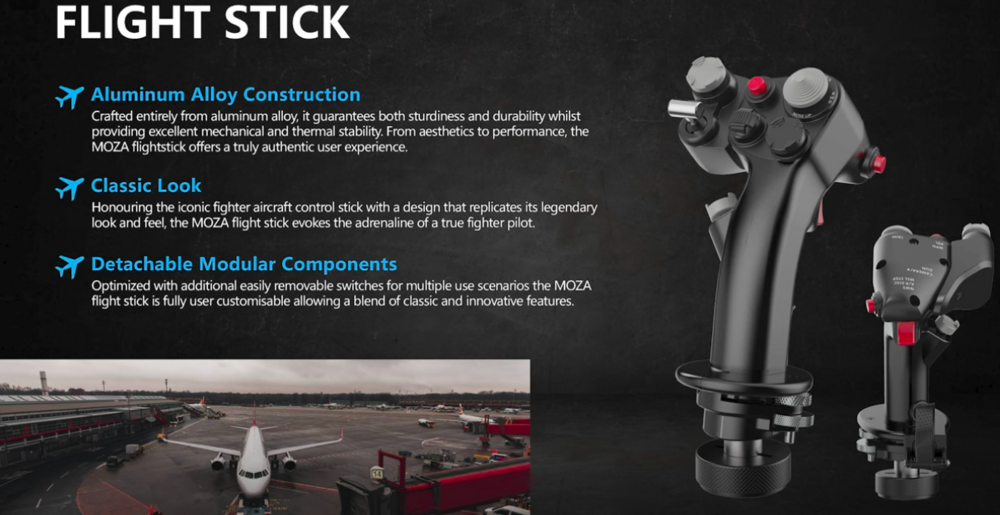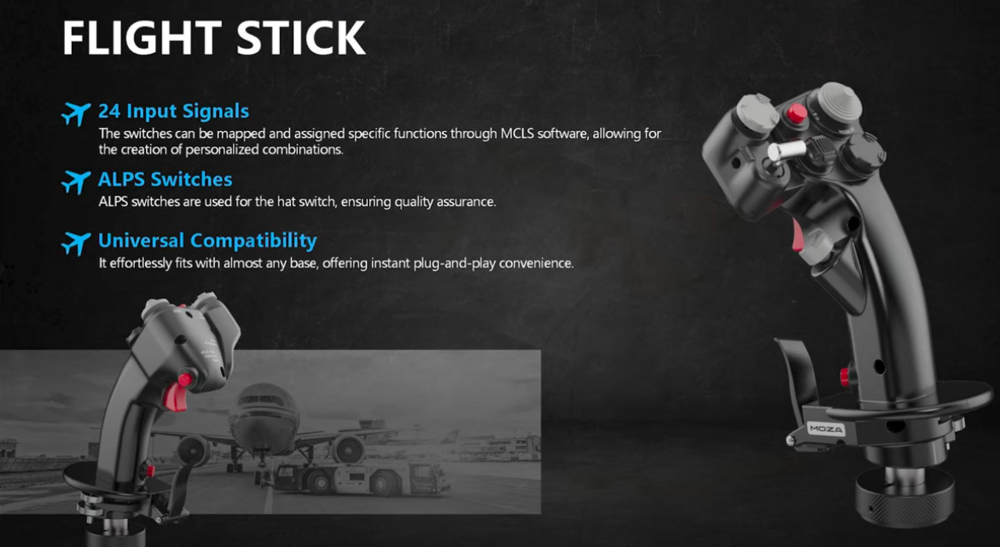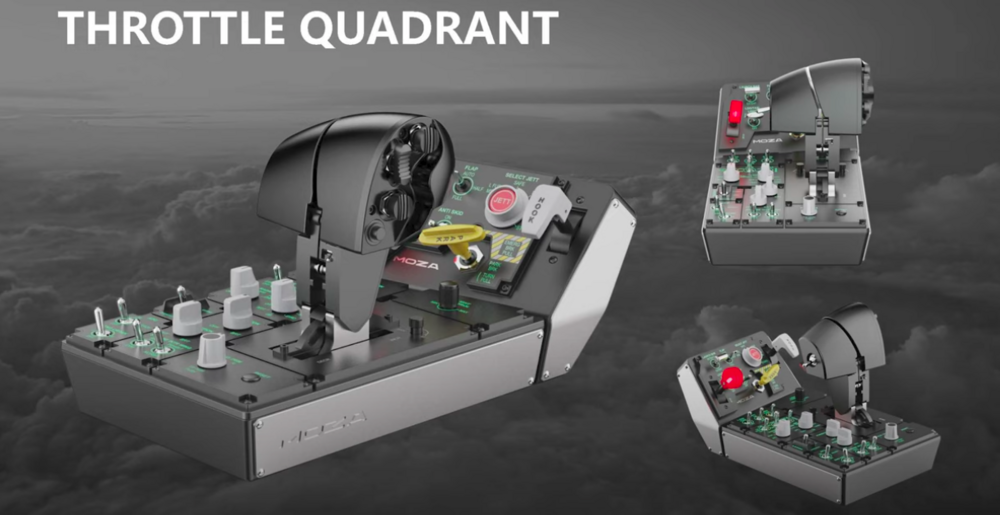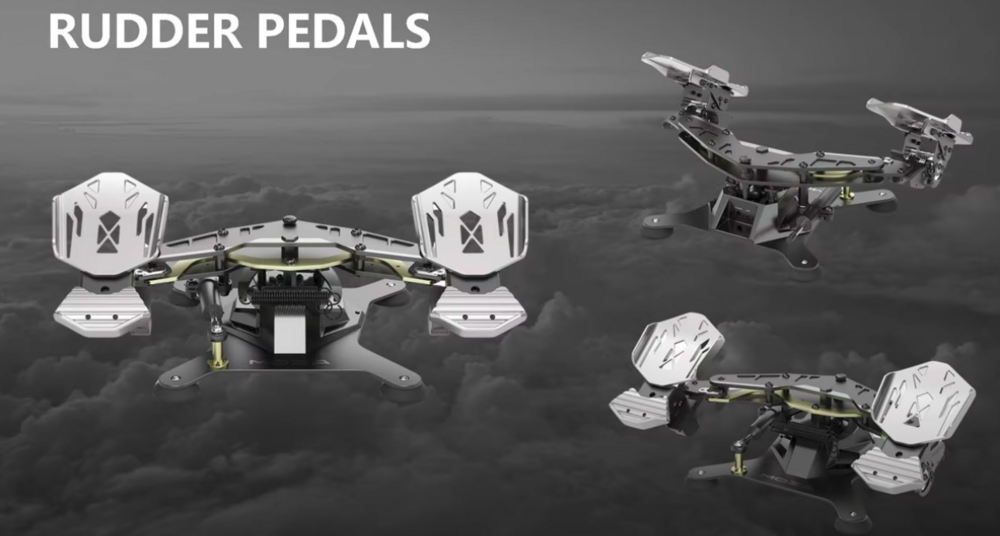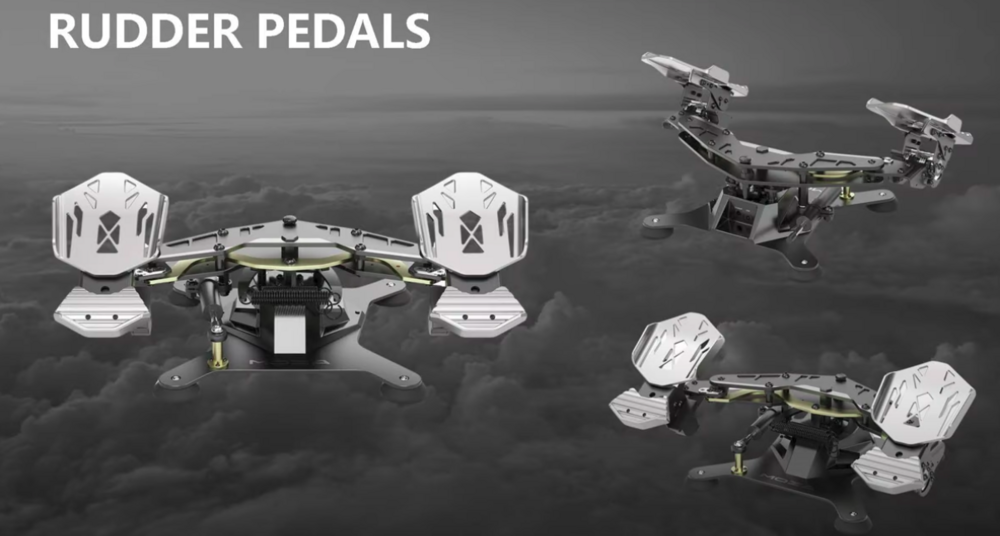-
Posts
1020 -
Joined
-
Last visited
Content Type
Profiles
Forums
Events
Everything posted by Aapje
-
I don't think that VPForce and FFBeast sent out any review units, but a company like Moza is definitely going to do that. So we should see a bunch of videos. Don't know how soon, but since BluGames apparently got a review unit, others probably got theirs too. Of course, a proper review requires more than having it for an hour.
-
@Captain Chuck For that price difference, I would get the regular 4070.
-
The Vive is a big step back. I'd say a Quest 3 if you want an upgrade and don't plan to upgrade your system anytime soon. Or a 2nd hand Pico 4 or Reverb G2, with the last one being rather risky.
-
-
There is no official info except for a teaser on Twitter. These pictures all leaked and I haven't seen a price leak yet. We may get the official announcement later today, as I think that today they'll have the very long set of keynotes at FlightSimExpo, where companies make their announcements. PS. Thanks to the mod for merging the topics.
-
I would also advise to go to 64 straight away. RAM is quite affordable at the moment, so I wouldn't skimp right now. That similar price only exists on paper. In the stores there is a price difference. Chuck should look at the price difference in Russia. If the gap isn't too big, I would go for the Super, which is a decent bit faster. It's a lot more expensive though. I would suggest sticking with the 4070 (super) given the budget constraints.
-
The Rhino is specced at 9 Nm as well, versus 35 for the FFBeast. If it is equal to the Rhino, for around $500, that would be great. And then Winwing can make a direct copy for $400
-
I'm very excited. I tried to encourage the Rhino & FFBeast guys* into starting a company, because I think that the prices can be brought down quite a bit by starting a proper production line. Having a 'real' company making the products also means that we can put pressure on module makers to properly support FFB, and for sims like MSFS to officially start to support it. And in my native language, there is a saying: if one sheep has crossed the dam, more will follow. In other words, it often takes one company/person to take the leap, to make others follow. In sim racing, there is a healthy competition for FFB offerings. It would be great to get the same for flight simming. * They may lose a lot of business, although they might not mind, if their ambition is not to make a career out of making FFB joysticks.
-
-
@Dangerzone It's a bit more complicated than that, because companies are also fighting for customer and media attention. If a company underpromises, they will get less exposure and fewer customers will give them a chance. Overdelivering results in happy customers, but it also tends to result in fewer customers. Unfortunately, companies that overpromise tend to do better when it comes to sales. So realistically, asking for a company to overdeliver often means that you ask for a company to lose out and disappear. I think that the issue is more that Pimax has been overpromising too much and they need to tone it down quite a bit.
-
I would not get the regular 4070 Ti, since it does not have extra VRAM, so the longevity is not any better. The prices are unlikely to match the benefits. The more you pay now, the less quickly you can upgrade again (unless you increase your budget). With GDDR7 coming soon and 3 GB chips coming a bit later, I foresee some solid performance improvements with the 50-series, but that they will age relatively poorly due to the low VRAM amounts. Perhaps we'll get those 3 GB chips and thus 50% more memory for the 50-series Super refresh in 2026, or else almost certainly with the 60-series in 2027. I think that those cards will have better longevity than the current offerings. But I think that you are overthinking it a bit. Both the 4070 and 4070 Super are great cards to run DCS with at 1440p. With these you should be able to last until 2027 or so.
-
Pimax posted an official response: I think that it is very positive that they are (painfully) honest about their need to grow as a company. It is hard to change a company culture, so we'll have to see if they can do it, but this video is on point.
-
But the memory bus is wider on the 7900 XT. The overall memory bandwidth is higher as a result. However, focusing on these specific differences is not really all that useful, as performance is a complex interplay of various parts.
-
I think that the short summary is that Pimax has a tendency to promise things when it is far from certain that they can deliver them. And when they can't make good on their promises, they try to cover it up. So I basically agree with Dangerzone when it comes to the customers. Don't put that much trust in their promises, but look at what customers are actually getting. And for the company I would offer the friendly bit of advice to improve massively on this front, because I think that with this course, a big lawsuit when they make a promise they cannot keep, is just a matter of time. It could be company ending. There is a reason why Apple, Intel, AMD and Nvidia are very careful with forward-looking statements, because they all know how bad a lawsuit over this can get.
-
With 4 DIMMs you are introducing headaches and to get an optimal result you will almost certainly need to get 4 DIMMs from the same batch. So that completely defeats the purpose of building it now and adding more later, because then the risk is high that the new batch is slightly different. There is also zero need if the goal is 64 GB. That can be achieved with just 2 DIMMS.
-
The Lite lacks eye tracking (and thus dynamic foveated rendering, but is lighter, cheaper and there is no fuss with a battery.
-
The 7800X3D is typically faster in games, since the 7950X3D has a hybrid design with X3D-cache only on one chiplet, with a high risk of running the wrong threads on the wrong core. The 7950X3D is more for if you have a mixed use case and even then you may need to do extra configuration to make things work the best.
-
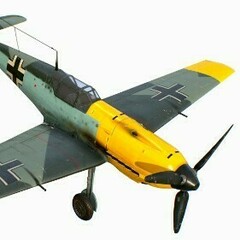
Considering upgrade, some advice?
Aapje replied to Werlin12's topic in PC Hardware and Related Software
You can always resell the Quest 3 and get a Pimax Crystal Light or such. And right now, AMD has the upper hand when it comes to CPUs, in particular for games. The X3D-chips are pretty much optimal for most gaming needs, while Intel lacks an option for having a huge 3D-cache and makes you pay for more cores to get higher on-chip cache and higher clock speeds. However, games rarely benefit (enough) from a huge number of cores to justify the expense. Basically, you need to pay much more to get an equivalent level of performance if you go Intel. They are also inefficient right now and currently have major degradation issues. Intel are working hard on improving and in a few years they may be much better, but for gaming, AMD is generally the best right now. -
BTW, you could have ReadyBoost enabled: https://en.wikipedia.org/wiki/ReadyBoost If so, you should disable it.
-
That is a flash/SD card controller, which connect to the USB bus: https://www.norelsys.com/product/item/4586.html Do you have an SD card or such in the card reader? If so, you can try removing it. You can also see if there is a driver update, or reinstall the driver for the card reader.
-
Do I spot some licorice? Upvoted for having good taste
-
I thought that you were referring to the Gladiator given the title you chose, but apparently your issue is with the throttle? It's really hard to give you advice when you spend so little time properly explaining your issue and instead, are mostly raging. Frankly, you come across as a customer from hell and your comments here really just make me feel sorry for the support person that has to deal with you. I think that your problem will be solved much more effectively if you focus less on making angry comments and more on actually giving VKB the opportunity to help.
-

Sony releasing PS VR2 PC adapter on August 7th - $60
Aapje replied to CybrSlydr's topic in Virtual Reality
That's a huge drawback. -
Not sure what raging here is supposed to achieve. Companies don't typically provide repair instructions to consumers, but VKB is very supportive of doing repairs or mods yourself. Which is more than many companies. I thought that the rapid fire trigger was broken on mine and requested a replacement, which they sent for free. Turns out that it just got loose, so now I have a spare. Opening up the stick and doing the fix is quite doable on your own if you have some technical insight and otherwise you can surely find a video on YouTube.




